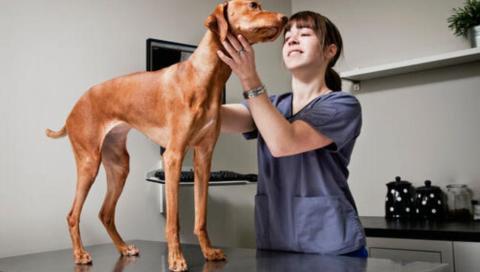
Phantom Pregnancy in Dogs: Symptoms and Causes Explained
Published on April 16 by Julia
Phantom pregnancy—also known as false pregnancy or pseudopregnancy—can be a confusing experience for dog owners. Your dog might show all the signs of being pregnant, but there’s no litter on the way. This condition is surprisingly common, especially in unspayed female dogs, and it’s rooted in complex hormonal shifts.
What Is Phantom Pregnancy in Dogs?
A phantom pregnancy occurs when a female dog displays maternal behaviors and physical symptoms of pregnancy despite not being pregnant. This condition usually happens 6 to 12 weeks after a heat cycle and mimics many aspects of a real pregnancy.
Though it can be startling for owners, phantom pregnancy is not usually dangerous, but it can cause emotional and physical discomfort for the dog.

Common Symptoms of Phantom Pregnancy
Dogs experiencing a false pregnancy may exhibit both physical and behavioral signs, including:
Physical Symptoms:
- Enlarged or swollen mammary glands
- Milk production
- Abdominal bloating
- Weight gain
- Nesting behavior
- Decreased appetite or nausea
Behavioral Symptoms:
- Nesting with toys or blankets
- Carrying objects like puppies
- Restlessness or clinginess
- Aggression or protectiveness
- Depression or anxiety
These symptoms typically appear a few weeks after estrus (heat) and can last for several weeks.
What Causes Phantom Pregnancy?
False pregnancy is triggered by hormonal fluctuations, particularly in the levels of progesterone and prolactin. After ovulation, even if a dog is not bred, her body undergoes hormonal changes similar to those in a real pregnancy. In some dogs, these shifts are enough to produce full-blown symptoms of pregnancy—without conception.
Dogs with regular heat cycles but no mating are more prone to phantom pregnancies. Some breeds may also be genetically more susceptible.

When to See a Vet
While most cases of phantom pregnancy resolve on their own, veterinary attention may be necessary if:
- Symptoms persist longer than 3–4 weeks
- The dog is in visible discomfort or distress
- Milk production leads to mastitis (infection of the mammary glands)
- Behavioral changes become extreme or aggressive
In severe cases, vets may prescribe hormone therapy or medications to reduce symptoms. Long-term prevention often involves spaying, which eliminates future heat cycles and associated hormonal swings.
Caring for a Dog With Phantom Pregnancy
If your dog is going through a phantom pregnancy, here are a few tips to help manage it:
- Avoid stimulating the mammary glands (no frequent touching or milking)
- Limit nesting behavior by removing "surrogate" toys
- Provide comfort with calm, predictable routines
- Ensure regular vet checkups to monitor symptoms
Phantom pregnancy in dogs is a natural, though sometimes distressing, hormonal condition. While it can cause confusion for pet parents, it’s usually not dangerous and often resolves without intervention. Understanding the signs and causes can help you support your dog with compassion and care—and seek medical help when needed.